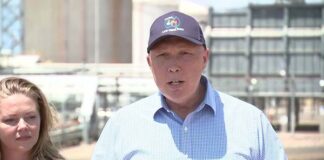A Four Corners investigation has unearthed shocking evidence on the state of Australia’s aged care system.
At the core of the crisis is a lack of staff and cost cutting driven by profiteering.
One resident was left to die alone, because casual staff members thought his condition wasn’t urgent. The company tried to cover this up, and was only caught out because his daughter couldn’t understand why the ambulance hadn’t arrived an hour after it was called.
Neda Borenstein’s son put a hidden camera in her room after she complained staff were mistreating and ignoring her. It showed her screaming for three hours some days for help to get out of bed, left unshowered and in soiled clothes.
According to Rebecca De Haan, who worked as a carer in nursing homes for ten years, staff have only, “six minutes per resident to have a shower and get dressed and get up”.
Aged care worker Katrina Legzdins told Four Corners about having to cope with shocking rates of understaffing, “There was myself and a registered nurse in charge of 72 residents. There’s no ratio… for number of staff to residents, so they can just get away with bare bones, bare minimum.”
There is an acute shortage of qualified nursing staff trained to look after people with complex medical conditions.
According to academic Sarah Russell 83 per cent of nursing home residents are classified as needing high level care, with problems such as dementia, chronic pain and depression.
Yet there is no ratio for the number of qualified nurses per resident, as is required in hospitals and childcare centres, academics and the nurses’ union point out.
Nurses now make up only 24 per cent of staff, with a decline of 5 per cent in the last ten years despite an increase in the healthcare needs of residents. They are being replaced by carers who have as little as six weeks training before they start work.
Some nursing homes spend just $6 a day on food per person, and half of residents suffer from malnutrition, according to an academic study published this year.
“Dinner time was like a couple of patty pies and a scoop of mashed potato,” Katrina Legzdins told Four Corners.
Jasmine Pitts, who worked as a chef in a nursing home, told Fairfax’s Michael Bachelard that the cost cutting, “was just ridiculous. For example, tea bags: the residents would complain saying can we get better tea bags? We just want to enjoy it. The company was. ‘No, we can’t afford them’.”
Coalition’s cuts
Scott Morrison tried to short circuit any criticism of his government through announcing a Royal Commission the day before the first report aired.
Yet as Treasurer, he cut $1.2 billion over four years to the basic subsidy paid to aged care providers (the ACFI). Its rate has been frozen since 2016. Aged care accountant Stewart Brown told The Australian, “ACFI residential care subsidies are now cumulatively increasing at a lower rate than the costs of providing direct care.”
Government funding provides around 75 per cent of the income for residential aged care.
Morrison says the government’s total spending on aged care is increasing. But most of that money has gone into alternatives to residential care. This year’s budget increased the number of “home care packages”, designed to allow the elderly to keep living in their own homes. There was funding for an additional 14,000 people, to cope with a waiting list of 100,000.
There have been more than 20 government inquiries into aged care since 1997, so the problems in the sector are already well known.
Another problem is profiteering by private aged care companies. The Howard government deregulated aged care in 1997 in an effort to encourage private profit making in the sector.
Private companies now provide around 40 per cent of the country’s nursing homes, although not-for-profit providers still run just over 50 per cent of beds.
The private sector share of aged care is also increasing. The six largest private providers run 20 per cent of all aged care beds, according to a Tax Justice Network report released this year.
In 2016 the most profitable companies were making $25,000 per bed per year, according to Fairfax.
The private companies have resorted to every trick possible to cut costs and boost profits—not only reducing the level of care but exploiting loopholes to reduce tax and exaggerating how sick residents are in order to get more government funding.
There are obvious solutions to the shocking treatment of elderly people in care. This must start with proper funding to meet basic levels of staffing, care and medical treatment, and to kick the corporate profiteers out of aged care.
By James Supple





